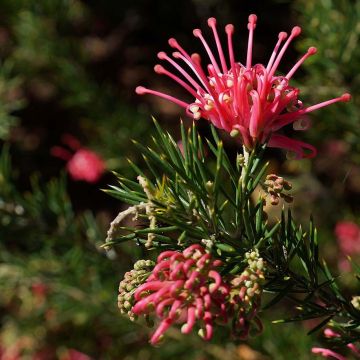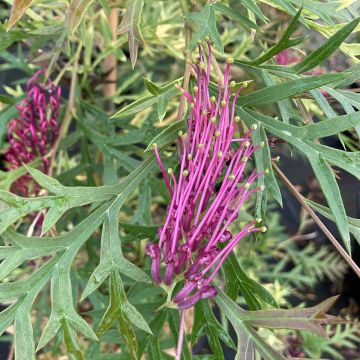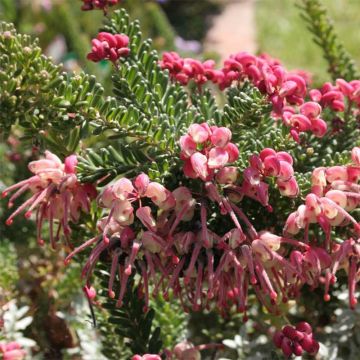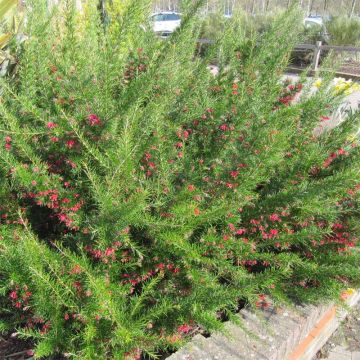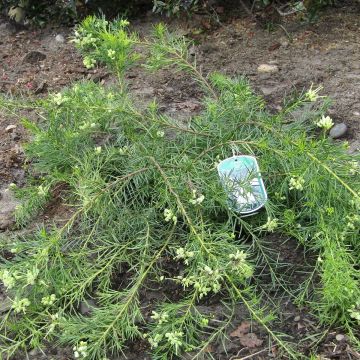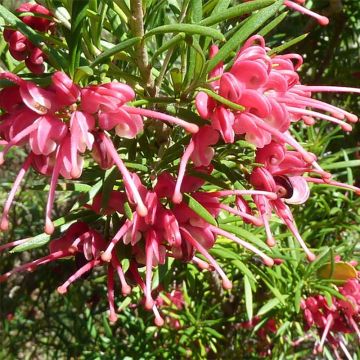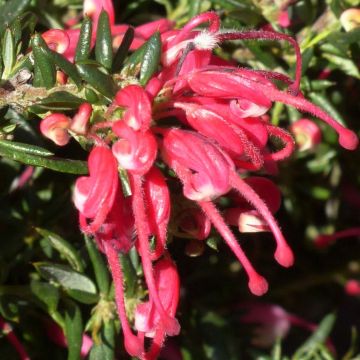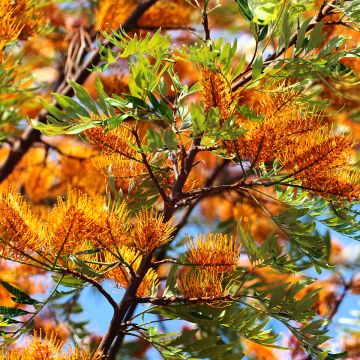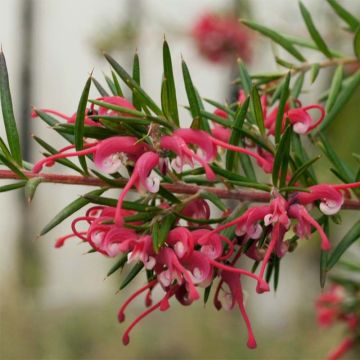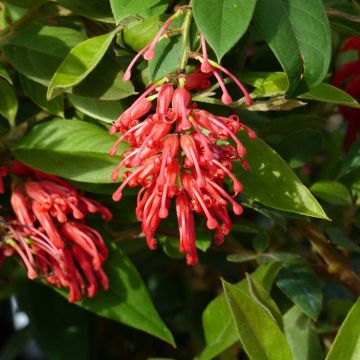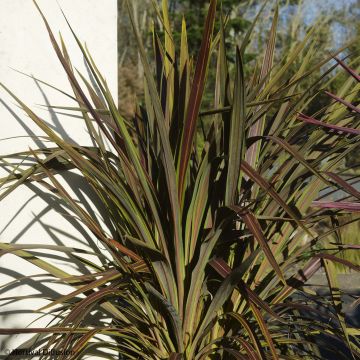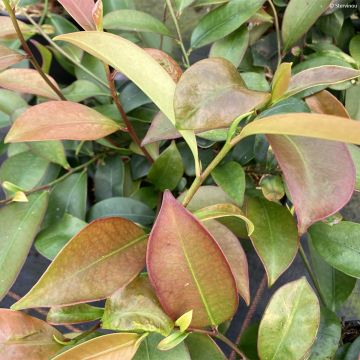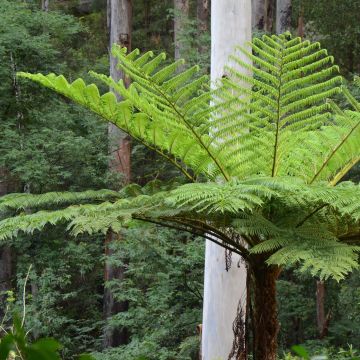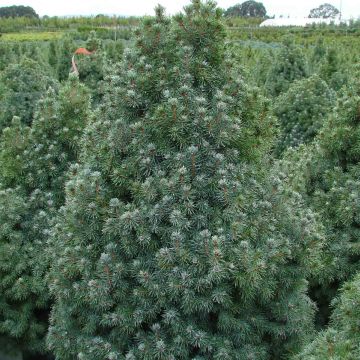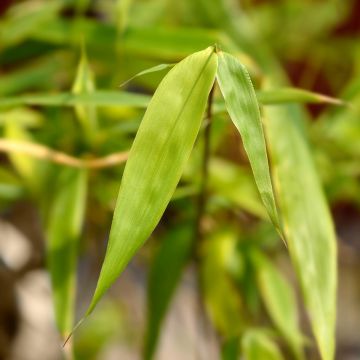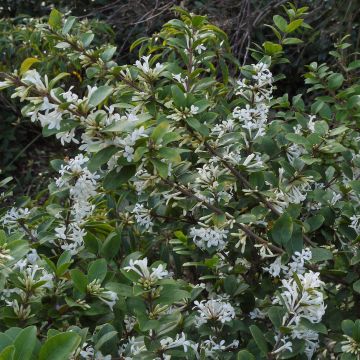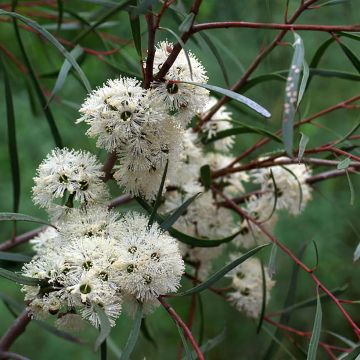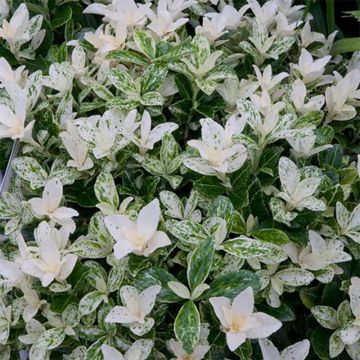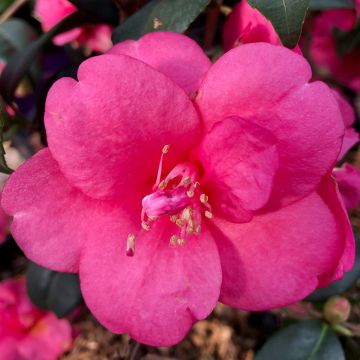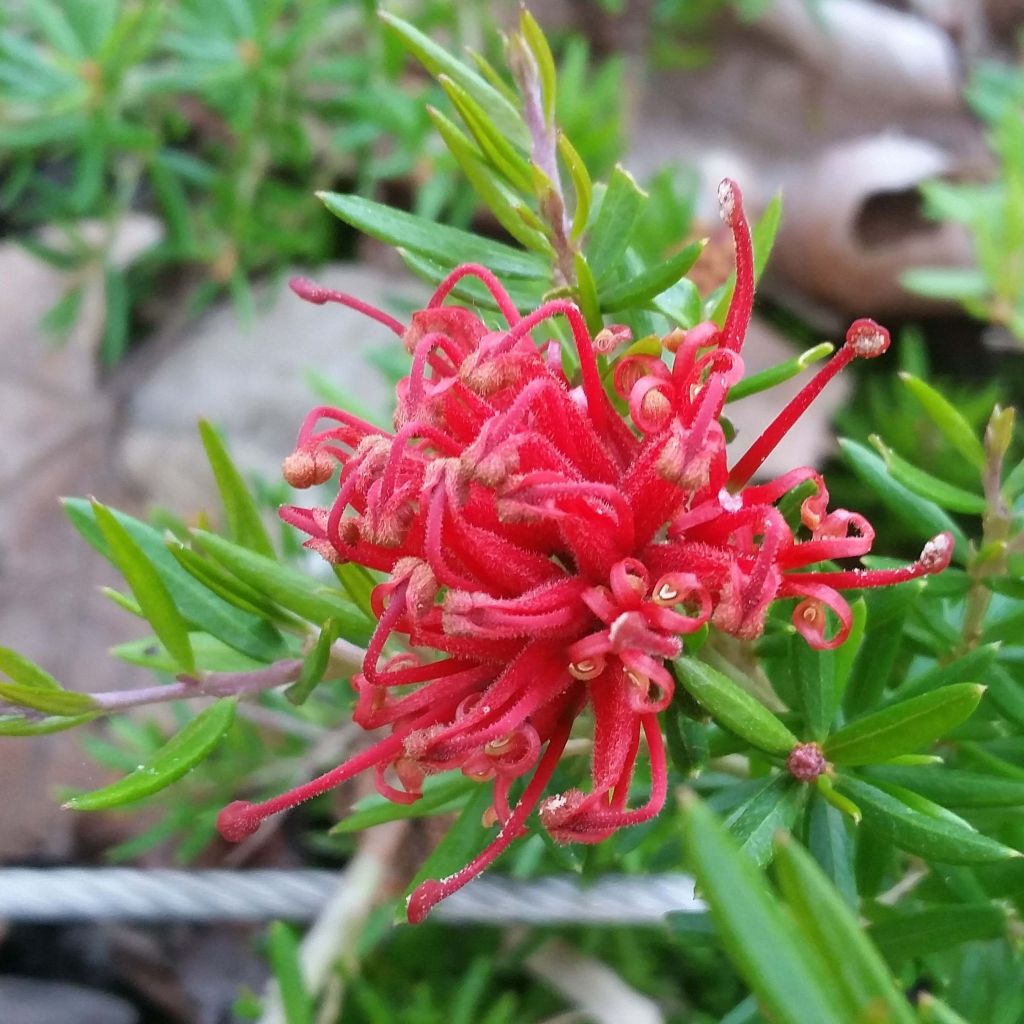

Grevillea New Blood
Grevillea New Blood
Grevillea x juniperina New Blood
Juniper-leaf Grevillea, Juniper Grevillea, Prickly Spider-flower
This item cannot be shipped to the selected country
Delivery charge from €5.90
Delivery to Corse prohibited
More information
Schedule delivery date,
and select date in basket
This plant carries a 24 months recovery warranty
More information
We guarantee the quality of our plants for a full growing cycle, and will replace at our expense any plant that fails to recover under normal climatic and planting conditions.
From €5.90 for pickup delivery and €6.90 for home delivery
Express home delivery from €8.90.
Delivery to Corse prohibited: UE law prohibits the import of this plant from mainland France to Corse as part of the fight against Xylella fastidiosa. Please accept our sincere apologies.
More information

Does this plant fit my garden?
Set up your Plantfit profile →
Description
Grevillea New Blood is a beautiful descendant of the Juniper-leaved Grevillea, interesting for its spreading and low habit and its endless bright red-pink flowering. This evergreen bush, native to Australia, will charm enthusiasts of exotic and hardy plants and owners of dry gardens in need of inspiration. It is capable of blooming all winter, until spring in mild climates, its dazzling flower clusters will be wonderfully highlighted by its vibrant green foliage. In cooler regions, the spectacle of its flowering will take place from spring to summer. Superb as ground cover in a large dry and sunny rockery, it also grows very well in pots on the terrace, to be stored away for winter in less favourable climates.
Grevillea New Blood, obtained in Australia in 2009, comes from the hybrid variety 'Goldfever', characterized by a prostrate habit and an endless pale yellow flowering. It possesses the genes of Grevillea juniperina and G. rhyolitica. All these bushes belong to the Proteaceae family and are native to New South Wales and Queensland in Australia. Many Grevillea species are pioneers in their natural environment: they tolerate dry but non or slightly chalky soils, especially phosphate-poor soils, and require full sun to flower.
Of fairly rapid growth and reaching its mature size in 3-4 years, 'New Blood' has a dense and prostrate habit. It will reach an average height of 30-35 cm (11.8-13.8 in) with a spread of 1.25 m (4 ft 1 in). The bush develops thin horizontal branches, tangled together, forming a dense and bushy mass. Its small narrow and pointed leaves do not exceed 3cm (1.2 in) in length and 5mm (0.2 in) in width. In the south, flowering takes place from November to June, without interruption as long as there is little or no frost, or from March to September in cooler and more humid climates. The bright pink-red flowers are composed of petaloid styles curled upon themselves and long curved stamens. They are grouped in pendulous heads of 5cm (2 in), resembling a spider. The root system of this plant is very dense near the surface, which is an adaptation to nutrient-poor soils and summer drought.
Grevillea New Blood is not difficult to grow as long as the required conditions are met. This bush requires little maintenance and tolerates light pruning, which will keep it dense. It prefers to be planted in coastal gardens spared from heavy frosts, in light, well-draining, rather acidic soil. In warm, sunny coastal climates, it will create a beautiful and flowery ground cover for a very long period. It will also look impressive when planted alone on large slopes or at the forefront of dry garden beds, but always in an open and sunny position. In an exotic garden, it can be associated with proteas (Protea repens), prostrate ceanothus, Canary or Madeira viper's bugloss, in a beautiful scene of blue, pink, and red. Growing it in containers allows for both control over the substrate composition and overwintering the bush in a cold greenhouse or a very bright and minimally heated conservatory.
Report an error about the product description
Grevillea New Blood in pictures
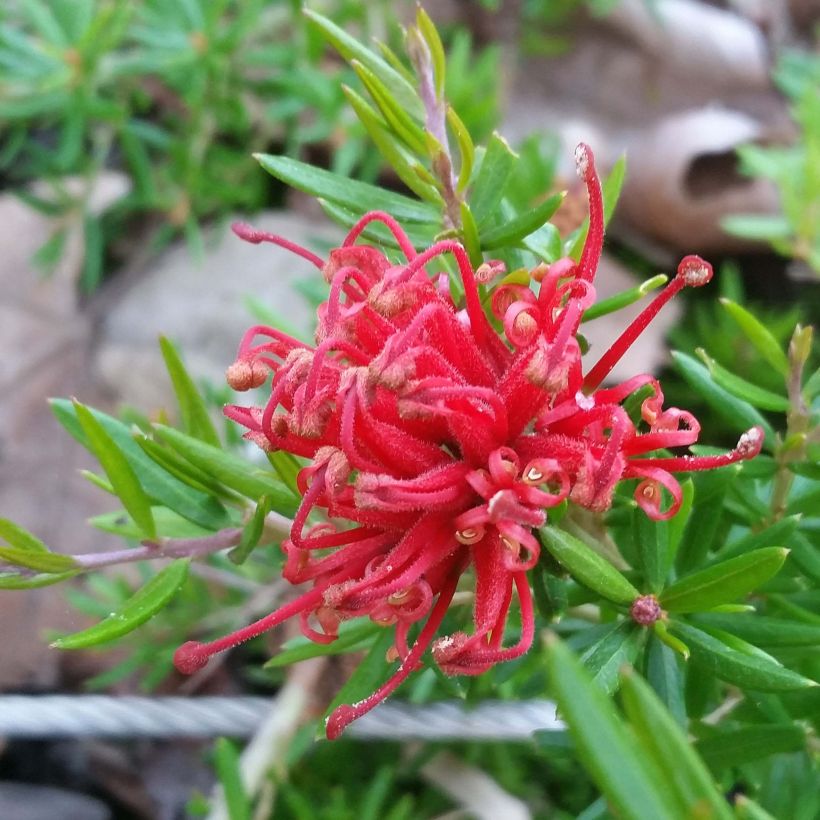

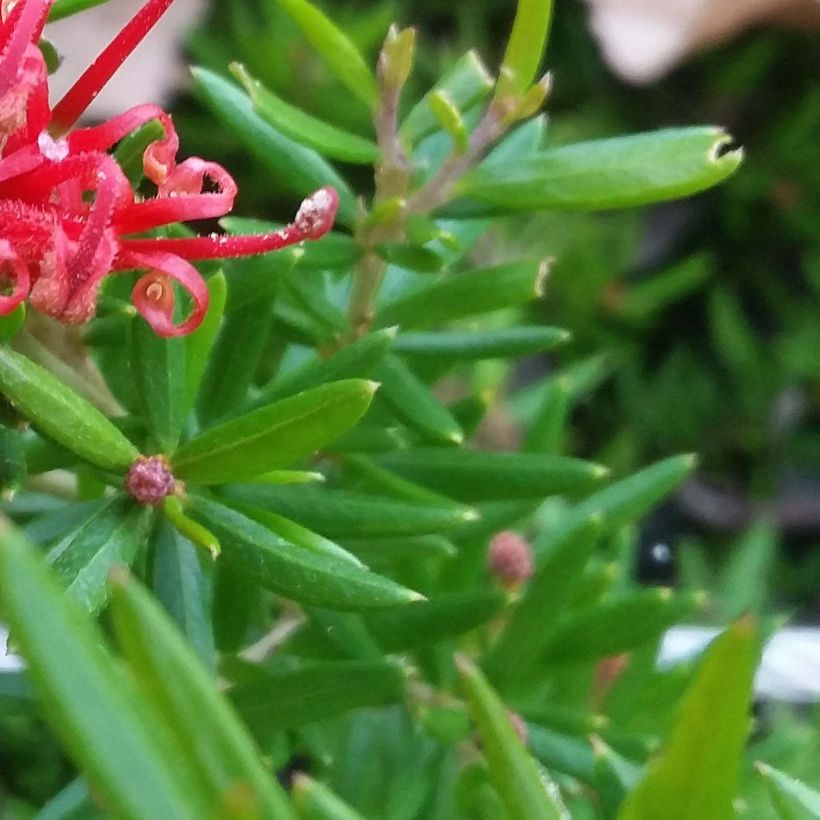

Plant habit
Flowering
Foliage
Botanical data
Grevillea
x juniperina
New Blood
Proteaceae
Juniper-leaf Grevillea, Juniper Grevillea, Prickly Spider-flower
Cultivar or hybrid
Other Grevillea
Planting and care
Culture:
Grevillea New Blood is best planted in spring, after the last frost. It prefers soil with an acidic to neutral pH, sandy, gravelly, loamy or poor and very well-drained. The presence of limestone in the soil causes a yellowing of the foliage, chlorosis, which weakens the bush until it dies. This condition can be corrected by regularly adding iron in its chelated form (sequestrene). In regions where the soil and subsoil are limestone, dig a large hole of 60 cm (23.6 in) in all directions, filled with ericaceous soil or peaty compost and non-limestone sand. Like all plants in the Proteaceae family, the Grevillea dislikes soils rich in phosphorus. Growing in a pot allows better control of the substrate and the plant can be stored frost-free in a borderline hardiness zone (down to -10/-11°C (14/12.2 °F) for a well-established plant).
Grevilleas are drought-resistant plants once well established: monitor watering in summer for the first 2 summers, watering will become optional or even unnecessary later on. In the ground, they appreciate a thick layer of mulch. Use wood chips or grass clippings. It is recommended to use a fertilizer very low in phosphorus, as it can reduce the plant's resistance to drought by destroying the dense root hairs that develop just below the surface of the soil. An N-P-K type fertilizer with proportions of 18-2-10 is well suited.
For pots, choose Grevillea species and varieties with low development. Use a light, well-drained potting mix that remains moist. We recommend the following mix: 60% pine bark, 20% coarse river sand, 10% fine river sand, and 10% clay soil for its water retention capacity. The pH should be 7 or less.
Insects and diseases:
Grevilleas can have black leaf spots, caused by a rarely lethal fungus: a fungicidal treatment will solve the problem.
Rotting of the collar can also occur, a deadly disease, also caused by fungi that develop in wet and warm soil. Avoid burying the plant's collar, keep it well-aerated. Avoid watering too often in hot and dry weather, let the soil dry out between 2 waterings.
Phytophthora (cinnamomi), a disease also caused by a fungus, affects many plants in dry areas. The parasite destroys the roots during excessively rainy winters or hot and humid summers. The plant may suddenly wilt in summer due to lack of water, as a result of the destruction of part or all of its roots. Partial or complete death of the vegetation or branches can be observed in severe cases. Prevention is crucial, as the disease is almost impossible to eradicate: ensure that the soil drainage is perfect, remove excess water from the saucer placed under the pots, and remove dead or diseased parts.
Pruning:
Grevilleas tolerate annual pruning well, during their growth period or just after flowering. Shorten the branches by one-third of their length. A regularly pruned bush will be more branched and more floriferous.
Propagation: by sowing in spring, or by taking heel cuttings in June-July. To improve the germination rate of fresh seeds, they can be immersed in boiling water.
About sowing: Grevilleas are plants linked to fire ecology: as such, they produce seeds that often need the action of intense and brief heat to break their dormancy.
Planting period
Intended location
Care
-
, onOrder confirmed
Reply from on Promesse de fleurs
Evergreen shrubs
Haven't found what you were looking for?
Hardiness is the lowest winter temperature a plant can endure without suffering serious damage or even dying. However, hardiness is affected by location (a sheltered area, such as a patio), protection (winter cover) and soil type (hardiness is improved by well-drained soil).

Photo Sharing Terms & Conditions
In order to encourage gardeners to interact and share their experiences, Promesse de fleurs offers various media enabling content to be uploaded onto its Site - in particular via the ‘Photo sharing’ module.
The User agrees to refrain from:
- Posting any content that is illegal, prejudicial, insulting, racist, inciteful to hatred, revisionist, contrary to public decency, that infringes on privacy or on the privacy rights of third parties, in particular the publicity rights of persons and goods, intellectual property rights, or the right to privacy.
- Submitting content on behalf of a third party;
- Impersonate the identity of a third party and/or publish any personal information about a third party;
In general, the User undertakes to refrain from any unethical behaviour.
All Content (in particular text, comments, files, images, photos, videos, creative works, etc.), which may be subject to property or intellectual property rights, image or other private rights, shall remain the property of the User, subject to the limited rights granted by the terms of the licence granted by Promesse de fleurs as stated below. Users are at liberty to publish or not to publish such Content on the Site, notably via the ‘Photo Sharing’ facility, and accept that this Content shall be made public and freely accessible, notably on the Internet.
Users further acknowledge, undertake to have ,and guarantee that they hold all necessary rights and permissions to publish such material on the Site, in particular with regard to the legislation in force pertaining to any privacy, property, intellectual property, image, or contractual rights, or rights of any other nature. By publishing such Content on the Site, Users acknowledge accepting full liability as publishers of the Content within the meaning of the law, and grant Promesse de fleurs, free of charge, an inclusive, worldwide licence for the said Content for the entire duration of its publication, including all reproduction, representation, up/downloading, displaying, performing, transmission, and storage rights.
Users also grant permission for their name to be linked to the Content and accept that this link may not always be made available.
By engaging in posting material, Users consent to their Content becoming automatically accessible on the Internet, in particular on other sites and/or blogs and/or web pages of the Promesse de fleurs site, including in particular social pages and the Promesse de fleurs catalogue.
Users may secure the removal of entrusted content free of charge by issuing a simple request via our contact form.
The flowering period indicated on our website applies to countries and regions located in USDA zone 8 (France, the United Kingdom, Ireland, the Netherlands, etc.)
It will vary according to where you live:
- In zones 9 to 10 (Italy, Spain, Greece, etc.), flowering will occur about 2 to 4 weeks earlier.
- In zones 6 to 7 (Germany, Poland, Slovenia, and lower mountainous regions), flowering will be delayed by 2 to 3 weeks.
- In zone 5 (Central Europe, Scandinavia), blooming will be delayed by 3 to 5 weeks.
In temperate climates, pruning of spring-flowering shrubs (forsythia, spireas, etc.) should be done just after flowering.
Pruning of summer-flowering shrubs (Indian Lilac, Perovskia, etc.) can be done in winter or spring.
In cold regions as well as with frost-sensitive plants, avoid pruning too early when severe frosts may still occur.
The planting period indicated on our website applies to countries and regions located in USDA zone 8 (France, United Kingdom, Ireland, Netherlands).
It will vary according to where you live:
- In Mediterranean zones (Marseille, Madrid, Milan, etc.), autumn and winter are the best planting periods.
- In continental zones (Strasbourg, Munich, Vienna, etc.), delay planting by 2 to 3 weeks in spring and bring it forward by 2 to 4 weeks in autumn.
- In mountainous regions (the Alps, Pyrenees, Carpathians, etc.), it is best to plant in late spring (May-June) or late summer (August-September).
The harvesting period indicated on our website applies to countries and regions in USDA zone 8 (France, England, Ireland, the Netherlands).
In colder areas (Scandinavia, Poland, Austria...) fruit and vegetable harvests are likely to be delayed by 3-4 weeks.
In warmer areas (Italy, Spain, Greece, etc.), harvesting will probably take place earlier, depending on weather conditions.
The sowing periods indicated on our website apply to countries and regions within USDA Zone 8 (France, UK, Ireland, Netherlands).
In colder areas (Scandinavia, Poland, Austria...), delay any outdoor sowing by 3-4 weeks, or sow under glass.
In warmer climes (Italy, Spain, Greece, etc.), bring outdoor sowing forward by a few weeks.

































